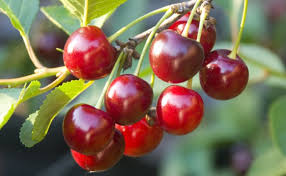Planting Fruit Trees in Backyard is Safe, Reliable, and Fun: 7 Tips
Have you considered planting a fruit tree in your backyard? Fruit trees not only provide delicious homegrown fruit but also offer numerous benefits. The right fruit tree can transform your backyard, provide shade in the summer, contribute to a healthier environment, and aid in the fight against climate change. They can also serve as a haven for wildlife, reduce grocery bills, and attract pollinators like bees, butterflies, and hummingbirds.

But fruit trees have their challenges. Different fruit trees have different needs for sunlight, chill hours (winter temperatures), and soil types. They also need plenty of sunlight, good air circulation, and well-drained soil. Plus, they are susceptible to insects, diseases, and hungry animals, and take years to mature and produce a good harvest. So, caring for fruit trees is imperative. Patience is also crucial.
Below are seven tips on planting fruit trees to help you beat fruit tree challenges. You can also consult the experts at RI Tree or take its fruit tree course.
· Location, location, location
Planting the right fruit tree in the right spot is critical. Take advantage of the USDA’s Hardiness Zone Map to select trees that will flourish in your climate. You can find your hardiness zone by entering your zip code at the USDA website
· Test your soil.
Your soil’s pH is critical. Knowing your soil pH can tell you if you need to enrich the soil before planting. Fruit trees prefer slightly acidic soil with a pH between 6.0 and 7.0. Test your soil well before planting in the late summer or fall. That gives you time to amend the soil based on the test results.
· Pick the right spot
Fruit trees need plenty of sunlight, good air circulation, and well-drained soil. So, pick a spot in your yard to plant a tree or trees that provide these conditions. Consider the mature size of the tree you’re planting and give it ample room to grow without crowding structures, power lines, or other plantings.
- Protect trees from pests and diseases
You may need to protect your tree or trees throughout the year from insects, diseases, and hungry animals. See our blog post and information on our website on this subject. Research fruit tree varieties known for disease resistance in your region, use organic pest control methods and encourage beneficial insects.
- Plant at the right time of year
The best time to plant fruit trees is late winter or early spring. Also, dig a proper hole when you plant a tree. It should be 2-3 times wider than the tree root ball and just as deep. And plant at the correct depth. Locate the root flare (where the trunk widens at the base) and plant the tree so the flare is slightly above the soil line. Avoid burying the trunk.
- Water correctly
Fruit trees prefer deep soakings that encourage roots to grow deep down, searching for moisture. Water your newly planted tree deeply and regularly, especially during the first year. Aim to deliver 2 inches of water at a time, allowing the top few inches of soil to dry out slightly between watering. Water at the tree’s base and use mulch to retain moisture.
- Prune for growth
Pruning young fruit trees will help them develop a strong structure and produce more fruit. Prune during dormancy, remove unwanted branches, open up the center, shorten vigorous branches, and cut branches just above a bud that faces outward in the direction you want new growth to develop. Angled cuts heal better.
One last tip: Different fruit trees have different pruning requirements, so you need to prune for your specific tree or trees. Research your tree’s needs to ensure proper pruning techniques for optimal fruit production. Proper pruning will boost your fruit harvest and contribute to the tree’s overall health and lifespan.

RI Tree’s Fruit Tree Course
Fruit trees can transform an outdoor space and deliver numerous benefits. RI Tree’s course on growing fruit trees in your backyard is safe, reliable, and fun. The course is for busy people who want to grow apples, peaches, and pears but have never had the time to learn how. Our novel approach is light on bookwork and heavy on skill-building and personal instruction.
For more information on RITree’s Growing Fruit tree course, see the RITree website. All classes will be held at RITree’s orchard training facility at 2953 Hartford Ave in Johnston, RI. Each session will be 2 hours long starting at 10:30 am. Class size will be limited to 15 persons.